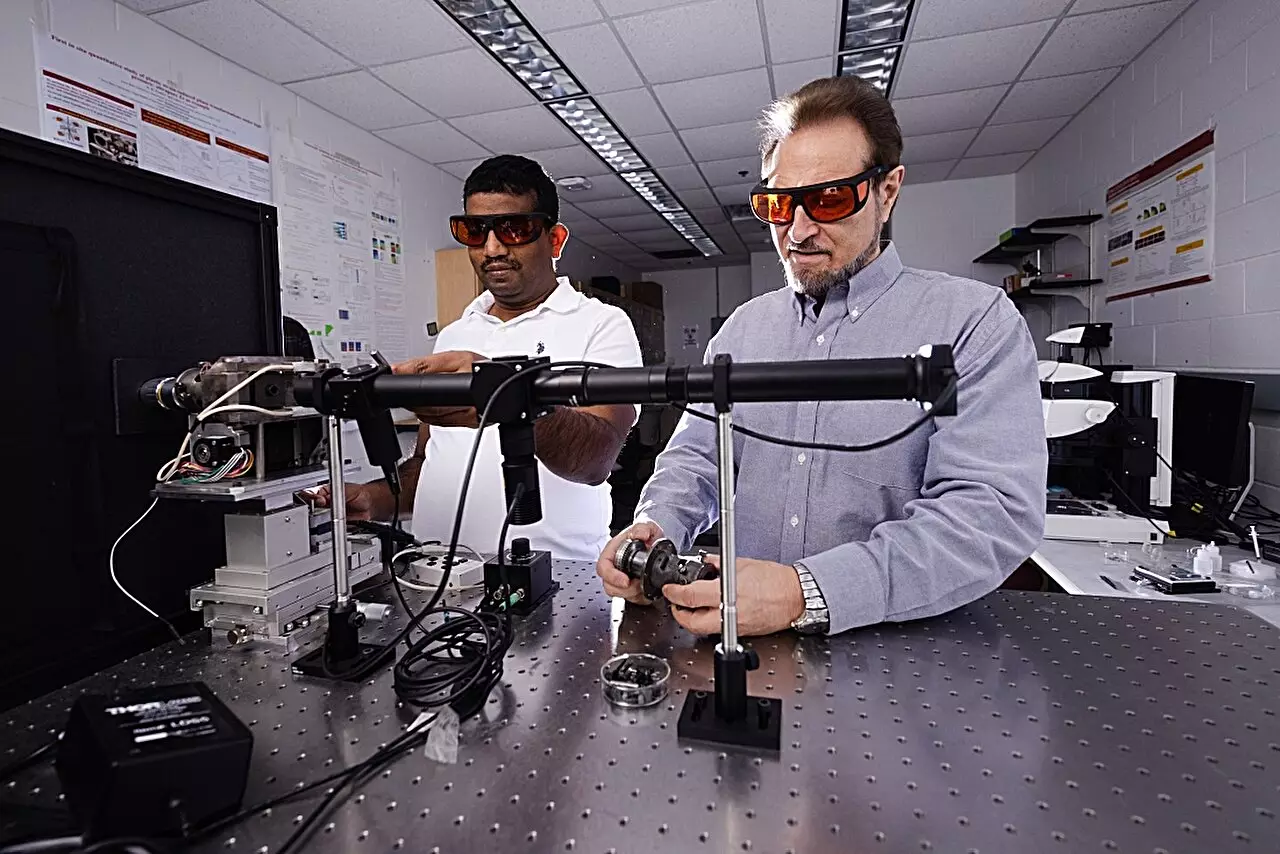In 1999, Valery Levitas embarked on a transformative journey, transferring his research focus from Europe to the United States. Among the equipment he brought was a rotational diamond anvil cell, a sophisticated device that enables researchers to apply extreme pressures and manipulations to various materials. Levitas, now an esteemed professor at Iowa State University, has since advanced this technology to delve deeper into the fundamental behaviors of materials under unique mechanical conditions. His work navigates the complex interplay among advanced mechanics, physics, material science, and applied mathematics, contributing to a deeper understanding of how materials behave when subjected to pressure and shear.
Levitas and his research team conduct pioneering experiments that reveal the intricate details of how materials like silicon—integral to modern electronics—undergo significant structural changes under specific conditions. This research not only validates existing theories but also opens the door to discovering entirely new material properties that may have invaluable applications across various industries.
The latest findings from Levitas and his collaborators, recently published in **Nature Communications**, investigate silicon’s behavior under conditions that combine both pressure and plastic shear deformation. Historically, while silicon’s response to high pressure has been researched extensively, the nuances of its behavior under combined stresses had been largely unexplored.
In their study, the researchers experimented with silicon at three distinct nanoscale dimensions, revealing that even minimal alterations in microstructural conditions can yield groundbreaking transformations within the material’s crystal phases. Remarkably, the experiment showed that by applying a comparatively low pressure of 0.3 gigapascals—significantly lower than the typical threshold of 16.2 gigapascals for such transformations—researchers could trigger a change from the silicon’s Si-I phase to the Si-II phase. This revelation underscores the revolutionary potential of employing plastic deformations to facilitate phase transformations that were previously thought to require extreme conditions.
A critical insight gained from this research is the emphasis on microstructural change rather than mere manipulation of the material’s shape or volume. Levitas notes that it is these microstructural modifications that engender meaningful phase transformations and consequentially alter the material’s properties. This pivot in focus unveils a robust avenue for innovation, allowing researchers to derive novel material characteristics from commonly used substances like silicon.
The study explores seven distinct crystal phases of silicon, each with unique properties that could be harnessed for practical applications in industries ranging from electronics to materials engineering. The researchers assert the feasibility of deriving nanostructured pure phases or combinations of phases that exhibit optimal electronic, optical, and mechanical properties through their technique. This versatility and refinement in material science open significant prospects for industrial applications, presenting valuable opportunities for enhancing existing technologies or developing new ones.
Transforming Industry Through Innovation
One of the most compelling aspects of this research is its potential impact on industry. Traditional methods require impractically high pressures to induce desirable phase transformations in materials. However, the innovative approach developed by Levitas and his team allows for accessing the properties of these high-pressure phases under dramatically reduced pressures. This advancement not only makes the transition to new material applications more feasible but positions their findings as a catalyst for further exploration and industrial adaptation.
Levitas’s foresight regarding silicon’s response to bending and stresses has culminated from two decades of rigorous thought and experimentation. His persistence in probing the microstructural behaviors of materials at lower pressures has yielded valuable breakthroughs that could transform how industries approach material design and application.
Valery Levitas’s work represents a significant leap forward in our understanding of material science. By employing advanced tools such as the rotational diamond anvil cell, his team has unveiled critical insights into silicon’s phase transformations that hold considerable promise for future applications. As researchers continue to explore the vast landscape of material behaviors under stress, their findings can lead to transformative developments in technology, pushing the boundaries of what we know about material properties and their potential.

